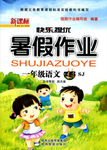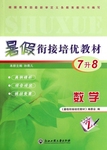题目内容
Tug-of-war(拔河) is not only popular in China, but in many other countries. Their tug-of-war match is a little different from ours. They have eight players for each team, while we may have the match between two sides with equal men or women players. Of course, they are usually tall, strong and heavy.
For a tug-of-war match, we need a long thick rope. Each team stands at one end of the rope, holding it. Then they try to pull the center of the rope, marked in the ground towards each of their own sides. The team which succeeds in pulling the center of the rope away through a certain distance is the winner.
Many foreign sport experts think we don’t have to be tall, heavy and strong to play tug-of-war. We needn’t have endless energy, for a match lasts only a few minutes. The secret is good hands. The players must have big, strong and hard hands. Before they start the match, they put a mixture of oil and petrol on their hands so they can hold the rope better.
Many foreign experts say the best hands for tug-of-war belong to the sons of farmers. This is because they have to work hard when they are still very young. Farming is a good practice for this sport!
64. Tug-of-war is a match in which who ______ are winners.
A. pull the rope to their side farther
B. make the center near to their own side
C. succeed in pulling the center of the rope in their direction
D. make the center of the rope pass through a certain length nearer to their side
65. In our country tug-of-war ______.
A. is not very popular B. is not so popular as that in foreign countries
C. is only a men’s game D. is not only played by men but also by women
66. In foreign countries a tug-of-war team ______.
A. has eight men or women players
B. has men players equal in number to the other side
C. has eight men players
D. is formed in the same way as in our country
67. The foreign experts think a good tug-of-war player must ______.
A. have lasting energy B. have big, strong and hard hands
C. do farm work D. be tall, heavy and strong
68. Which of the following is NOTtrue?
A. In foreign countries only women take part in tug-of-war.
B. In foreign countries a tug-of-war match has 16 players.
C. To hold the rope better, many players put a mixture of oil and petrol on their hands.
D. The sons of farmers are thought to be the best tug-of-war players.

 新课标快乐提优暑假作业陕西旅游出版社系列答案
新课标快乐提优暑假作业陕西旅游出版社系列答案 暑假衔接培优教材浙江工商大学出版社系列答案
暑假衔接培优教材浙江工商大学出版社系列答案 欣语文化快乐暑假沈阳出版社系列答案
欣语文化快乐暑假沈阳出版社系列答案EVENTS
Long March exhibit
The Shanghai History Museum is putting on an exhibition to mark the 60th anniversary of the Long March. On show are more than 220 photos and 40 items that explain with pictures how the communist Red Army drew back from its besieged(被围困的) bases in Jiangxi Province and fought its way to northern Shanxi Province in the mid-1930s. Explanations are all in Chinese. The show will end on November 20.
Time: 10:00 am-4:00 pm
Address: 1286 Hongqiao Road
Admission: 8 yuan for Chinese /15 yuan for foreigners
Thai elephants
Eight elephants from Thailand are entertaining visitors at Changfeng Park by riding bikes, playing basketball, balancing on a beam, dancing and blowing a mouthorgan. People are encouraged to have a tug-of-war(拔河比赛)with the animals or lie on the ground and have the elephants walk over them. The elephants give three shows a day at 9:30 am, 3:30 pm and 8:00 pm and there is an additional show at l:30
pm at weekends. The show will end on November 15.
Address: 189 Daduhe Road
Admission: 30-40 yuan
Dancing dolphins
Dolphins jumping from the water to touch a ball, swaying their bodies to music, kissing people and doing math by tapping their tails have made the dolphin arum in Peace Park an attraction for children. Seals and sea lions also perform.
Hours: 10:30 am, 4:00 pm, and 7:30 pm
Admission: 20 yuan for adults and 10 yuan for children.
【小题1】If you go to visit the Long March exhibit with an
Australian, how much will you pay altogether for the admission?
| A.16 yuan. | B.23 yuan. | C.30 yuan. | D.20 yuan. |
| A.many articles written by famous writers |
| B.many things left by the Red Army |
| C.books on the Long March |
| D.many photos and pictures about the Long March |
| A.Riding bicycles. | B.Blowing a mouth-organ. |
| C.Doing math. | D.Having a tug-of-war with people. |
| A.not only dolphins but also seals and sea lions perform |
| B.only dolphins perform |
| C.only seals and sea lions perform |
| D.only seals perform |
| A.11:00am | B.14:00 | C.18:00 | D.19:30 |